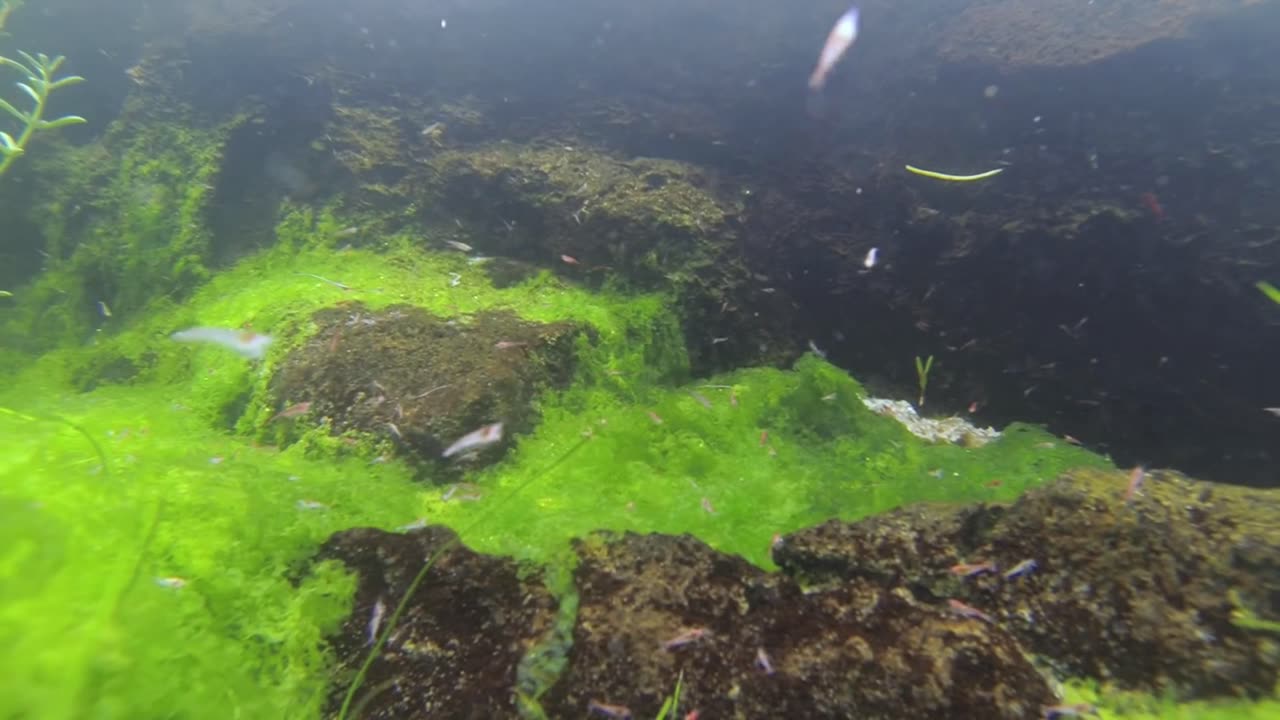Premium Only Content

ECOSPHERE SHRIMP OPAE ULA IN THEIR NATURAL ENVIRONMENT WITH SOME ROCKS AND GREEN GRASS
Shrimp are crustaceans (a form of shellfish) with elongated bodies and a primarily swimming mode of locomotion – most commonly Caridea and Dendrobranchiata of the decapod order, although some crustaceans outside of this order are referred to as "shrimp".
More narrow definitions may be restricted to Caridea, to smaller species of either group or to only the marine species. Under a broader definition, shrimp may be synonymous with prawn, covering stalk-eyed swimming crustaceans with long, narrow muscular tails (abdomens), long whiskers (antennae), and slender legs Any small crustacean which resembles a shrimp tends to be called one They swim forward by paddling with swimmerets on the underside of their abdomens, although their escape response is typically repeated flicks with the tail driving them backwards very quickly. Crabs and lobsters have strong walking legs, whereas shrimp have thin, fragile legs which they use primarily for perching.
Shrimp are widespread and abundant. There are thousands of species adapted to a wide range of habitats. They can be found feeding near the seafloor on most coasts and estuaries, as well as in rivers and lakes. To escape predators, some species flip off the seafloor and dive into the sediment They usually live from one to seven years Shrimp are often solitary, though they can form large schools during the spawning season
They play important roles in the food chain and are an important food source for larger animals ranging from fish to whales. The muscular tails of many shrimps are edible to humans, and they are widely caught and farmed for human consumption. Commercial shrimp species support an industry worth 50 billion dollars a year, and in 2010 the total commercial production of shrimp was nearly 7 million tones. Shrimp farming became more prevalent during the 1980s, particularly in China, and by 2007 the harvest from shrimp farms exceeded the capture of wild shrimp. There are significant issues with excessive bycatch when shrimp are captured in the wild, and with pollution damage done to estuaries when they are used to support shrimp farming. Many shrimp species are small as the term shrimp suggests, about 2 cm (0.79 in) long, but some shrimp exceed 25 cm (9.8 in). Larger shrimp are more likely to be targeted commercially and are often referred to as prawns, particularly in the Commonwealth of Nations and former British colonies.
Shrimp are swimming crustaceans with long narrow muscular abdomens and long antennae. Unlike crabs and lobsters, shrimp have well developed pleopods (swimmerets) and slender walking legs; they are more adapted for swimming than walking. Historically, it was the distinction between walking and swimming that formed the primary taxonomic division into the former suborders Natantia and Reptantia. Members of the Natantia (shrimp in the broader sense) were adapted for swimming while the Reptantia (crabs, lobsters, etc.) were adapted for crawling or walking. Some other groups also have common names that include the word "shrimp",any small swimming crustacean resembling a shrimp tends to be called one.
-
 9:49
9:49
Tundra Tactical
12 hours ago $19.46 earnedThe Best Tundra Clips from 2024 Part 1.
107K9 -
 1:05:19
1:05:19
Sarah Westall
12 hours agoDying to Be Thin: Ozempic & Obesity, Shedding Massive Weight Safely Using GLP-1 Receptors, Dr. Kazer
91.3K23 -
 54:38
54:38
LFA TV
1 day agoThe Resistance Is Gone | Trumpet Daily 12.26.24 7PM EST
66.3K11 -
 58:14
58:14
theDaily302
21 hours agoThe Daily 302- Tim Ballard
64.1K10 -
 13:22
13:22
Stephen Gardner
14 hours ago🔥You'll NEVER Believe what Trump wants NOW!!
112K304 -
 54:56
54:56
Digital Social Hour
1 day ago $11.49 earnedDOGE, Deep State, Drones & Charlie Kirk | Donald Trump Jr.
63.6K5 -
 DVR
DVR
The Trish Regan Show
16 hours agoTrump‘s FCC Targets Disney CEO Bob Iger Over ABC News Alleged Misconduct
67.9K39 -
 1:48:19
1:48:19
The Quartering
16 hours agoElon Calls White People Dumb, Vivek Calls American's Lazy & Why Modern Christmas Movies Suck!
148K112 -
 2:08:42
2:08:42
The Dilley Show
17 hours ago $37.36 earnedH1B Visa Debate, Culture and More! w/Author Brenden Dilley 12/26/2024
127K42 -
 4:55:59
4:55:59
LumpyPotatoX2
20 hours agoThirsty Thursday on BOX Day - #RumbleGaming
115K8